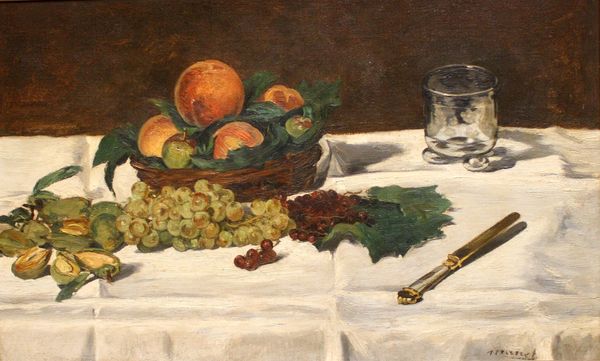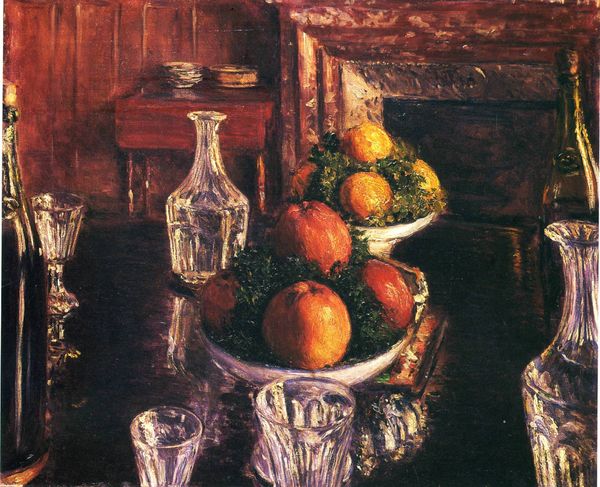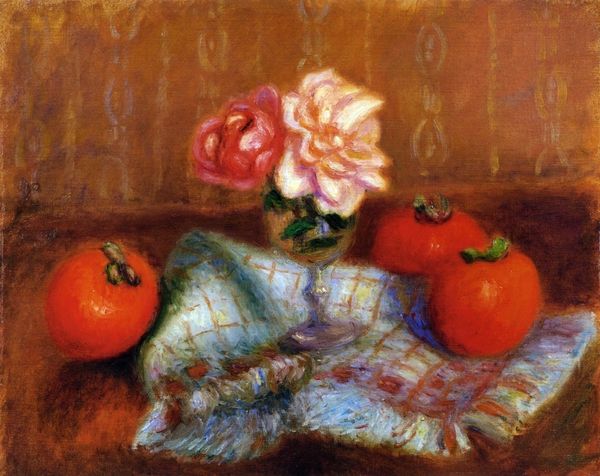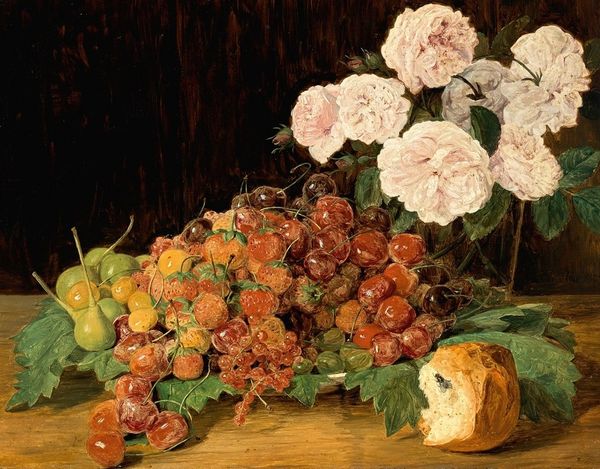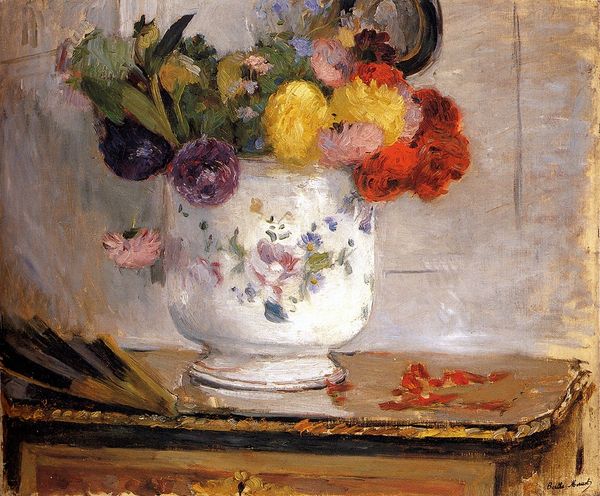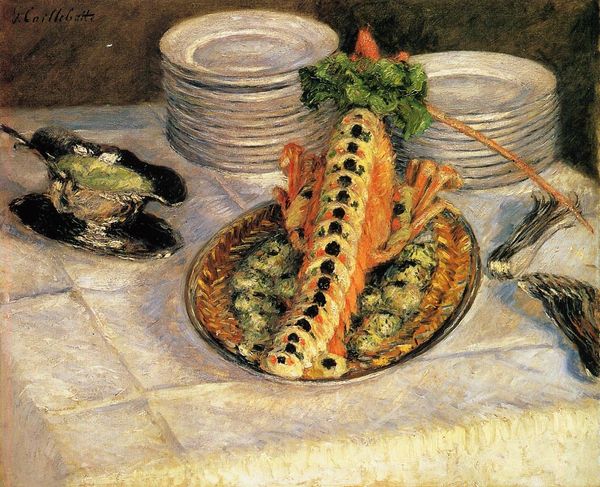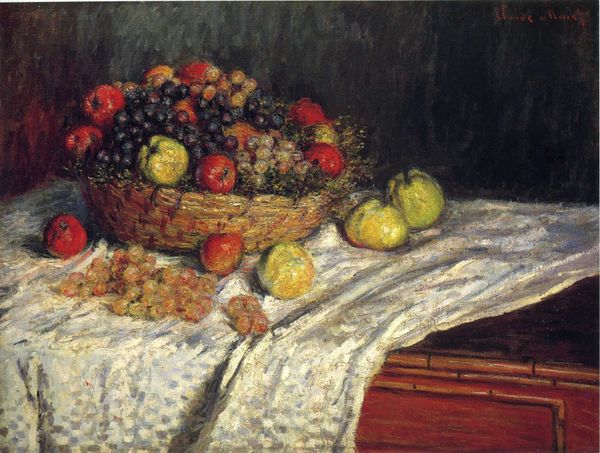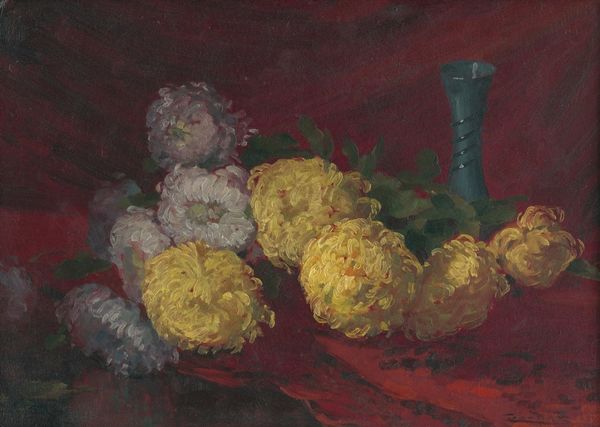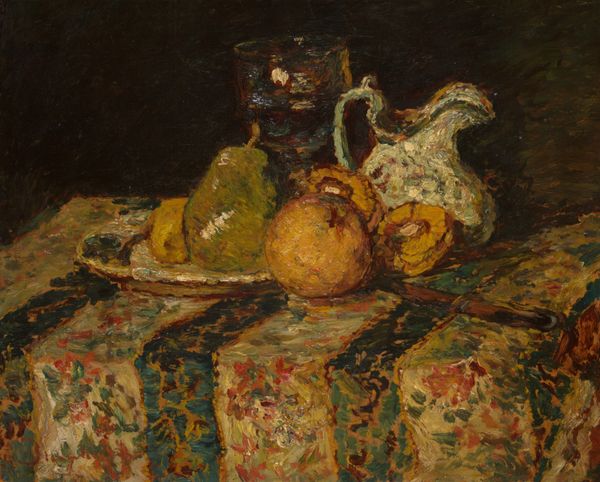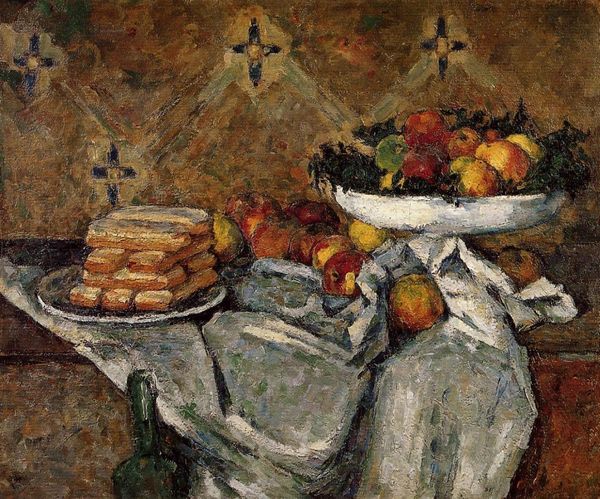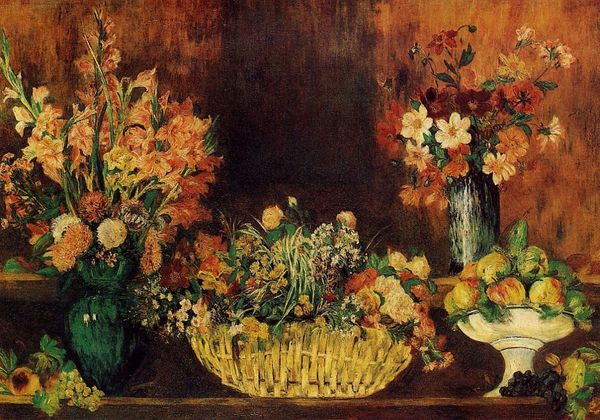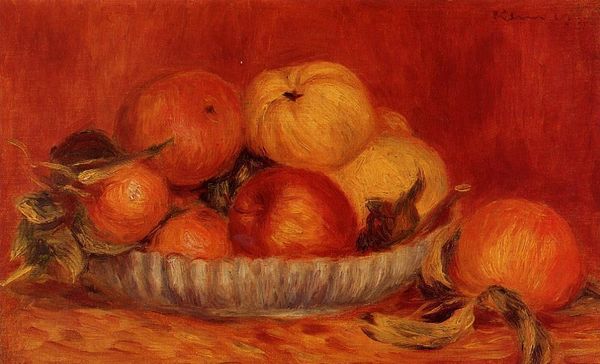
Copyright: Public domain
Curator: Take a look at "Still Life with Brioche" by Édouard Manet, created around 1880. Editor: Mmm, instantly makes me hungry. There's something about that light on the brioche – it’s like a tiny sun radiating deliciousness. Curator: Manet painted this piece using oil paints. Notice his brushwork, especially in rendering textures and reflections, that's typical of impressionism, although he bridges styles like Baroque as well. His emphasis on immediate visual sensations meant rapidly applying paint to capture the essence of the scene, influencing a whole generation of artists who followed. Editor: It’s funny how seemingly simple objects – a cake, a flower – can carry so much. That lone rose perched on the brioche – it gives the piece this bittersweet quality, don’t you think? Like fleeting beauty juxtaposed with something substantial, even decadent. Curator: Decadence and the accessibility of luxury became more pervasive aspects of French society, think consumerism and increasing social stratification, during this era. Manet seems keen to show these in contrast, where you have natural elements displayed against human-made confectionary in an environment that is nonetheless private and perhaps exclusive. Editor: I get it. The cake itself looks almost sculpted, which leads you to question its production process – the baker, the ingredients, the work. Suddenly this isn’t just a painting of a cake; it's a story about skill, accessibility, and the way we choose to adorn our lives. It reminds me a little of when my grandma baked us desserts as children—it becomes more than the mere product. Curator: Absolutely. And looking at his choice of medium, using commercially available oil paint indicates the democratization of art production that was going on during the time. Editor: You know, thinking about it, "Still Life with Brioche" made me consider more than just cake and roses. I think that its artistic expression provides more to contemplate for viewers from all walks of life. Curator: Agreed; examining artworks this closely helps us consider historical periods and production methods critically.
Comments
No comments
Be the first to comment and join the conversation on the ultimate creative platform.
